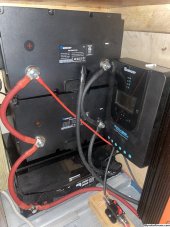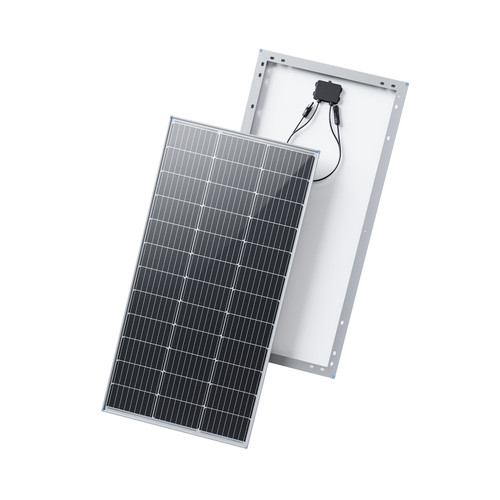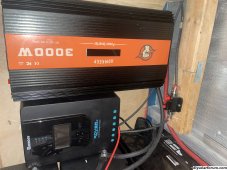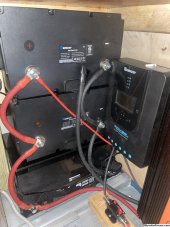Since it's possible your inverter is damaged, turning it off may not actually truly turn it off. I'd consider it hazardous. To disconnect, simply remove either (or both) wires that connect the inverter to the battery (the wires are most often in the back of the inverter). Disconnecting is generally not as specific as connecting. You can worry about re-connecting later and we can help you.
You have not enough panels for the amount of battery you have. So your battery is likely getting drained. Are the batteries lithium or AGM?
Because an inverter (especially a 3000W one) will use battery power simply to keep the inverter powered on. Even if nothing is connected to the inverter, it can drain your battery in far less time than you'd think. And since it's confirmed you do not have enough solar panels to charge up your battery, it's being drained by the inverter (plus any loads you have connected, such as your mini-fridge which uses more energy than you might currently believe) and so when batteries get low, some inverters get really unhappy about this.
One possibility is that it has taken a week for your battery bank to slowly get discharged to too-low levels for your system to work properly. And/or your inverter is damaged. If your battery bank holds 30 units of power and your inverter+loads use 10 units of power every day and your panels put back in 3 units of power every day, then you an see that after enough days your battery bank will have 0 units of power.
No worries - most of us were confused when we first started too, so you're in good company. There are a lot of NOT confused people on this forum as you can see from some of the replies already.
The confusion comes from when you THINK you know how the system works and then you experience the reality of how it REALLY works. People smarter than me can help you get down to the exact reasons as to why you are having problems, but my guesses above are likely in the ballpark.
Please post your exact inverter, model # and link as well as your batteries, and solar panels. You may also not have your Renogy Rover charge controller programmed properly for your batteries, which we can help with as well. Pictures can help a lot, if you can do so easily. Pictures of your inverter, batteries and charge controller as well as the back side of your panels (so we can see the spec label).










